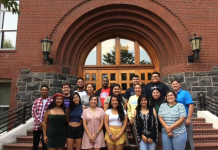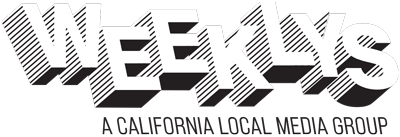
As I ask Dyuthi Boinepalli, a 15-year old at Saratoga High School, about the uptick in Artificial Intelligence usage on campus and how it affects curriculum. She looks at me and smirks. “I’d answer that, but it’s not loading,” she said, referring to how she and her peers have begun to increasingly integrate ChatGPT into their daily lives—even conversations with student reporters.
OpenAI’s ChatGPT software answers prompts in a matter of seconds, doing so with eloquent language, sources and in great length. The software generates answers to questions quickly, and without having to conduct research yourself. However, it has led to trouble in the Los Gatos-Saratoga Union High School District. Students have been caught using ChatGPT to write essays and complete other assignments, taking the credit for its responses.
The issue has become quite a serious one across the nation. For example, Baltimore-based consulting company, the Art & Science Group, found 69% of college-bound students have used generative AI tools.
Instances of students cheating on essays and other assignments in English has led to teachers at Saratoga High School switching to in-class essays rather than traditional at-home essays. With the popularity of ChatGPT and its writing services on the rise, schools have had to make changes to their curriculum in order to make sure that their students’ words are truly their own.
Some teachers at Saratoga High are halting their earlier approach of relying more heavily on essays in English units. They have replaced these with outlines students may work on only during class. Then, on the day of the in-class essay, these students must transfer their outline and make all their edits by the end of the period. Students receive instruction and around a week of class time to work on the outline, which they are also not allowed to take home. And they’re not allowed to use technological devices for the task.
A spokesperson for LGSUHSD said the District is “currently working with students and staff to develop district-wide AI guidelines that will be rolled out at the beginning of next school year. Currently, teachers have their own policies in class that assess student classwork, knowledge, and skills; and district-wide, students and staff follow our Academic Integrity Policy.”
The District has also partnered with Stanford University’s Graduate School Of Education for a professional development day session on “Artificial Intelligence and Its Impact on Teaching and Learning.” All classroom teachers were to go through the training.
“This work, in addition to working closely with our students and colleagues, will help shape these guidelines moving forward,” said Public Information & Engagement Officer Tanya De La Cruz.
‘Everyone thinks that ChatGPT is objectively right. But it isn’t’
—Dyuthi Boinepalli, Saratoga High School student
The changing AI policies have left some students feeling like they didn’t get a chance at creating the best essay they possibly could. “I feel like if I had more time outside of class to think about it, I would have written a better essay. But teachers are grading it the same as if I had time outside of class to write it,” says Saachi Saraf, a sophomore at Saratoga High School.
Norah Heller, a sophomore at Saratoga High School, believes AI is a useful foundation for writing an essay, but only to an extent. “I think it’s a good start,” Heller said. “It gives people good ideas that they can build off of, but I don’t think it’s right to just have the AI, like, write your whole essay and then pass it off as your own.”
In an article for Forbes, Nick Morrison writes that “ChatGPT essays performed better on average, being marked particularly highly for ‘information’ and ‘reflection.’” However, the chatbot’s writing style is seen by some students as bland and monotone.
Back at Saratoga High, Boinepalli is one of them.
“It’s like everyone is using the same words, the same style, the same writing,” She said. “It’s like a very streamlined process. So, if everyone’s using ChatGPT, everyone sounds the same. Everyone takes chat GPT as objectively right, so they think that they should be like ChatGPT. It takes away the human essence because everyone thinks ChatGPT is objectively right, but it isn’t.”










Really appreciate this discussion it’s so relevant right now. Aligning AI policy in education is a real balancing act. On one hand, you want to encourage innovation, and on the other, there’s the issue of academic integrity. As someone juggling work and study, I’ve personally found tools like pay for essay writing https://royalwriter.co.uk/pay-for-essay helpful in staying afloat without burning out. It’s not about cheating just about managing time when everything hits at once. Curious how others are handling the pressure too?